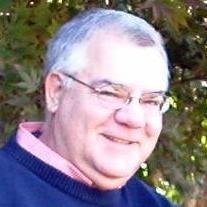-
Content Count
19 -
Joined
-
Last visited
About hzjcm8
- Birthday 12/22/1949
Contact Methods
-
Website URL
http://www.jglubricantservices.com
Profile Information
-
Gender
Male
-
Location
Avon, IN
-
Interests
Church work, flower gardening, playing music, watching my grandchildren grow.
Recent Profile Visitors
6425 profile views
-
Tom Johnson USAF 4 years (1968-1972) SSGT Weapons Mechanic (Conventional) Cold War Nuclear Base (RAF Bentwaters, UK) plus TDY to Libya, Turkey, Italy, and Spain
-
hzjcm8 started following Question about Allison Transmission, Transmission Fluid Sample Results, Dexron VI In Hydraulics System Speced For Dexron III and and 1 other
-
Jason, I was asked to comment on this. Your Castrol TranSynd is still in good shape and doesn't need to be changed-- as evidenced by the report. If the filters (main and lube) are around 8 years old, they may not be the newer "High Capacity" Allison filters. So, I'd say drop the filters, change them out to the latest Allison "High Capacity" filters (see attachment), top off with TranSynd and resample to establish a new baseline. Sample on an annual basis and consider using the Ultimate Oil Analysis test kit that includes Particle Count and ISO Cleanliness Code. The extra testing will provide a good assessment of the filtration system. The Allison lube and main filters are rated at 50 microns so the Particle Count and ISO Cleanliness Code will tell us how the filters are performing. I've attached the latest Allison "High Capacity" filter kit part numbers for your (and other forum members') use. With respect to data limits not being shown on the report, we don't publish data limits (such as wear limits). Limits can be confusing or "wearisome" to some folks. Let's say you have a wear metal reading that's just borderline or just outside a published limit. So, what does that really mean? As dons2346 said, it's more revealing to observe trends or data changes with respect to time (miles, hours, calendar time) and look for trend differences such as curve inflections, spikes, etc. That's why we choose to use overall severity ratings: "normal, abnormal and critical" ratings. These "Severity Ratings" are established based on statistical distributions using hundreds of samples from similar equipment and similar fluids. These population studies provide average and standard deviation data that enable us to place results into these severity ratings based on distance from the mean (standard deviation).. So, although we don't publish limits, we do place a "Severity Rating" on the sample that can best be observed with respect to what the comments in the "Comments Section". Hope this helps !! If not, send me a PM and I'll get back to you. PS: I am also former USAF (1968-1972). I served at a now abandoned Nuclear Deterrent base along the North Sea during the Cold War. I was a Weapons Specialist (46250). Upon getting my Honorable Discharge in 1972, I married, started a family and used my "GI Bill" to get a BSMET from Purdue University. I also flew for a few years. I was part of the Allison Engineering "Screaming Eagles" flying club. We had (2) airplanes. A Cessna 150 and a Cherokee 180. Now I fly my desk using Microsoft Flight Simulator. I can fly anywhere and not have to worry about malfunctions !!!
-

Dexron VI In Hydraulics System Speced For Dexron III
hzjcm8 replied to calvin9853's topic in Engines
See my answer to this question here: https://community.fmca.com/topic/3171-retired-allison-transmission-fluids-engineer/?do=findComment&comment=78356 -
Calvin9853, My recommendation is to stick with the BP Autran Syn295 fluid. Do not use DEXRON-VI. If the seals in your hydraulic and power steering system are made from a certain type of Viton (fluoroelastomer) known in the industry as "non-base resistant", then, they may not be compatible with DEXRON-VI and may harden and crack over time. No one in this universe would be able to tell you the exact seal compound in your seals in the hydraulic or power steering systems. So, it's best to stick with the BP Autran Syn295 product. Back when GM was still licensing DEXRON-III products, the BP Autran Syn295 fluid would have passed the DEXRON-III specification and would have gotten licensed. That's all history now; but, you can trust what I'm telling you. The BP Autran Syn295 fluid is "very" compatible with the seals in your hydraulic and power steering systems. PS: Note to forum members. Please do not go nuts with a multitude of questions about seals and fluids. Trust me on this. If your system, be it RV, automobile, truck, equipment, etc., calls for a DEXRON-VI approved fluid, then use a DEXRON-VI approved fluid. If, on the other hand, your Owner's Manual calls for a DEXRON-III approved fluid (which would be the case for most systems manufactured prior to 2006), then you're best off using one of the Allison TES-295 approved synthetic fluids because the Allison spec includes the Viton seals test. I say this because GM no longer approves DEXRON-III products and most on the market today are unlicensed products. Most will say "D3M" or something similar since they can't legally use the DEXRON trademark. HOPE THIS HELPS !!!
-
gaylejp, I was asked to comment on this post. The change from TranSynd to DEXRON-III (probably a modern day "D3M" fluid) would typically not manifest as a harsh shift. See "D3M" note below. I don't believe you'd see (or feel) any real difference in what we at GM referred to as "shift feel" under most shifting conditions (upshifts, downshifts, wide open throttle or closed throttle). I don't know what fluid they installed; but, most would be compatible from a frictional properties standpoint. TranSynd had a GM DEXRON-III license at one time (way back). Testing for these type fluids includes frictional testing and the test requirements were basically equal for the Allison TES-295 and GM DEXRON-III specifications. My bet is that it's something else may be a contributing factor in the harsh shift. Maybe they introduced air into the fluid by either under filling or over filling. Did they use a "flushing machine"? Or, did they just drain it and refill it? I'd check the fluid level using the dipstick and the onboard electronic shift selector method. Make sure the fluid is in the "COLD" band when cold with vehicle on a flat surface, transmission in "P" and engine at idle. Once it's warmed up, it should be in the "HOT" band under the same conditions. Please let me know what you find out. See what they put in it and let us all know !!! NOTE: Manufacturers can no longer use the word "DEXRON" on their packaging since the DEXRON-III specification is obsolete. So, instead, they call the fluids "D3M" which indicates that the formulation, at one time, passed both the GM DEXRON-IIIH specification and the Ford "MERCON" specification. Most of those older DEXRON fluids passed both specs. Thus, "D3M" means DEXRON-IIIH/MERCON.
-
Hi. I'm back after being away for a long time. DEXRON-III is not a synthetic and it's also not an oil brand. DEXRON-III "was" a General Motors specification for automatic transmission fluids and described the testing requirements for fluids to pass in order to be considered for approval by the GM ATF Committee, of which I was a member for around 20 years. GM DEXRON-III fluid specifications (DEXRON-II, DEXRON-IIE, DEXRON-III, and DEXRON-IIIH) are now obsolete. These older specifications were replaced by GM DEXRON-VI ("6"). DEXRON-III fluids were mostly based on a mixture of API Group II base oils with good additives packages. Generally, they were good fluids but tended to lose viscosity (thin out) over time. Do to some unique requirements, listed in the Allison TES-295 specifcation, the TES-295 approved fluids are formulated with true synthetic (API Group IV) base oils.. Please note that DEXRON-VI fluids are not recommended for Allison products built prior to 2007. I don't believe they are recommended today either. Allison recommends TES-295 approved fluids (Castrol TranSynd, BP Autran Syn 295, Shell SPIRAX S6 A295, Mobil DELVAC Synthetic ATF, etc.). A list of approved TES-295 fluids can be found at Allison TES-295 Approved Fluids List Hope this helps !!! For more about API Base Oil Groups and how they are defined visit API Base Oil Definitions. Also, refer to the attached chart.
-
 hzjcm8 changed their profile photo
hzjcm8 changed their profile photo
-
TranSynd (or one of the other TES-295 approved fluids) is always a good idea. Besides, once you change it over (using the double drain and refill method) you're pretty much "fill for life" at that point. Just change the filters every 75,000 miles and take an oil sample once a year.
-
Yes, it would work just fine and much better than a DEXRON-III fluid (or a D3M fluid as they're marketed today). The life will be much longer and you could verify it through oil analysis.
-
No it does not. Allison will always give the standard "conservative" answer. What is true is that, generally, oil life does not correlate well with calendar time given the great amount of variation from vehicle to vehicle with respect to duty cycle (stop and go driving, hill climbing, average speeds, etc). In my experience, based on years of TranSynd fleet testing, that you'd be throwing out good TranSynd (and a lot of your hard earned money) by changing it every 4 years. Allison has city transit bus and refuse hauler (garbage truck) customers running 4 years on TranSynd. An RV is much more mild on the fluid than those applications. What you need to know is that oil degradation, whether you're talking engine oil or transmission fluid, is based on chemical change (oxidation) and physical change (viscosity loss) that occurs with extended use. The rate at which the fluid (or oil) degrades depends the amount of mechanical and thermal stresses it sees over a given time period. Therefore, it depends on the amount of heat and loads to which the fluid is exposed over a given amount of time. To get the most from oils or transmission fluids, use oil analysis to measure these changes. Allison, in fact, recommends oil analysis as the preferred way to determine change intervals. This will maximize time between oil changes with TranSynd and protect your equipment. I will be at the Georgia State Good Sam Club rally in Perry, GA this Friday and Saturday (3/23-3/24) where I will give seminars on this very subject. Here's my recommendation: Use genuine Allison filters and change them every 50,000 miles (or 75,000 miles if you have the newer "High Capacity" filters) and top off with TranSynd lost with the filter change. Do an oil analysis once per year and you'll see that the fluid will remain stable for much longer than 4 years unless it gets contaminated from something like a cooler leak which is unlikely. Call me if you have any questions on my cell phone at 317-430-3029 and I can explain anything you question. Give me your email address and I'll send you some literature on this.
-
Sorry Gdroke, I think I missed this question. If it was the BP Autran 295 fluid then it's OK and fully mixable at any ratio.
-
Sorry guys. I've been away for awhile. I had a new grand daughter born and then lots of work with my new business. I'll try to keep up.
-
Wayne, Sorry but I had overlooked your question. Again, I apologize for that. The standard analysis can't tell the difference between TranSynd and standard DEXRON-III. Viscosity change is an indicator but we'd need to use some IR scans to look at specific wavelengths. It would cost more but we might be able to tell. You can call me to discuss if you'd like at 317-430-3029.
-
JohnQFWB, The old DEXRON-III type automatic transmission fluids (the old dinosaur fluids) have a bad habit of losing viscosity over a relatively short period of time; that's why Allison restricts the drain intervals vs. TranSynd. TranSynd will not lose viscosity and will remain very resistant to oxidation and friction fade for very long periods of time. It will probably be fill for life for you. Also, the only DEXRON-III fluids that are recommended are the ones that have passed the Allison TES-389 seal test. You can find them on the Allison website at: https://fdlrd.swri.org/Allison/ApprovedFluidsList.aspx?Id=2. But, just like all the other DEXRON-III fluids, they will also lose viscosity and thin out over a short period of time. My recommendation is to switch to TranSynd. If you do it yourself, here's the procedure. Drain the old fluid and refill with TranSynd Drive the RV for 1/2 hour to warm it up Drain again Install new filters Refill with TranSynd Take an oil analysis sample to establish a baseline (optional) Sample the transmission fluid once a year to ensure against contamination due a coolant leak (optional)
-
Tom Johnson USAF Staff Sergeant 4 years (June 1969 - May 1972) 46250, Conventional Weapons Specialist, SUU-16A Gun Pod (F4C aircraft), M61A1 Vulcan Cannon RAF Bentwaters, UK (Cold War Nuclear Base)
-
USAF, 1968-1972 Weapons Specialist


